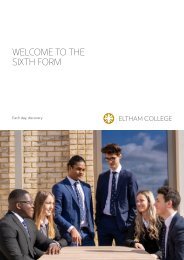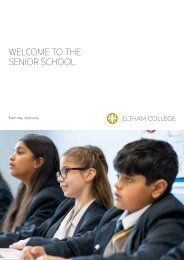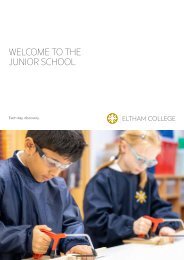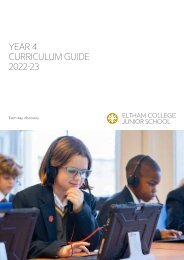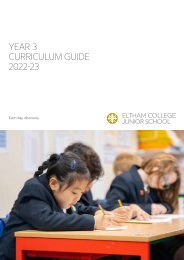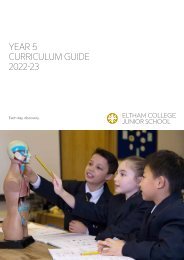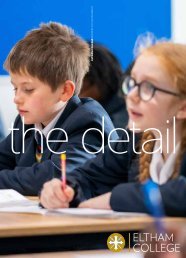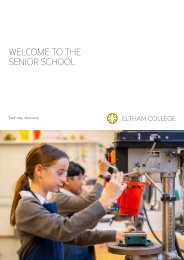JS Curriculum Guide - Year 6 - 2022-23
You also want an ePaper? Increase the reach of your titles
YUMPU automatically turns print PDFs into web optimized ePapers that Google loves.
Mathematics<br />
Teaching Arrangement<br />
As in <strong>Year</strong> 5, students will be taught in sets during <strong>Year</strong> 6.<br />
Teaching in sets allows for a smaller group size, and for learning<br />
to be more focused to the particular needs of the individuals or<br />
groups of students within a set. The four sets will generally be<br />
covering the same topics; it may be, however, that one set<br />
spends slightly more or less time on a certain topic, or<br />
approaches the learning from a more practical or abstract<br />
perspective than others, depending on need.<br />
There is a level of fluidity as to which set students are in, and<br />
changes can be made during the year depending on a range of<br />
factors (not purely scores in assessments). Ability levels do<br />
overlap between sets, especially as different children can have<br />
relative strengths in different topics.<br />
Scheme of Work<br />
Calculations<br />
Students will meet, revisit, practise and perfect a range of<br />
calculation methods in all four operations (addition, subtraction,<br />
multiplication and division) over the course of the year. These will<br />
include formal written methods, mental approaches and informal<br />
methods, involving jottings, which support the use of mental<br />
methods over time. The key idea is efficiency - students will be<br />
encouraged to reflect on the numbers involved in a calculation<br />
and choose a method which will lead to the solution efficiently<br />
and securely, rather than always using a certain method<br />
whatever the problem.<br />
Mental Maths and Times Tables<br />
Students will receive regular informal mental Maths tasks<br />
-designed to identify areas for extra practice and development<br />
- as well as informal check-ups of times table knowledge. As well<br />
as instant recall of all times table facts, students should be<br />
increasingly able to recall square, cube and prime numbers<br />
under 100 from memory.<br />
Problem-Solving<br />
Much mathematical content is learned or applied through<br />
problem-solving. As such, students will be given opportunities to<br />
use their ‘problem-solving toolkit’ regularly, involving skills such<br />
as: talk it through; make a list; try a simpler case; trial and<br />
improvement; draw a diagram; find a rule or pattern; use a<br />
system; act it out.<br />
Explicit reference to these strategies within lessons will give<br />
students confidence to identify and use them in their own<br />
independent problem-solving. Students should be confident<br />
to explain and prove mathematical patterns using<br />
appropriate language.<br />
Maths topics to be covered<br />
In <strong>Year</strong> 6 the use a textbook called “Mathematics - <strong>Year</strong> 6”<br />
produced by Galore Park. It is designed to support transition<br />
from Key Stage 2 to Key Stage 3 Maths content – studying and<br />
revising topics from the <strong>Year</strong> 6 curriculum scheme of work while<br />
introducing some concepts which will be covered in more detail<br />
in <strong>Year</strong> 7.





